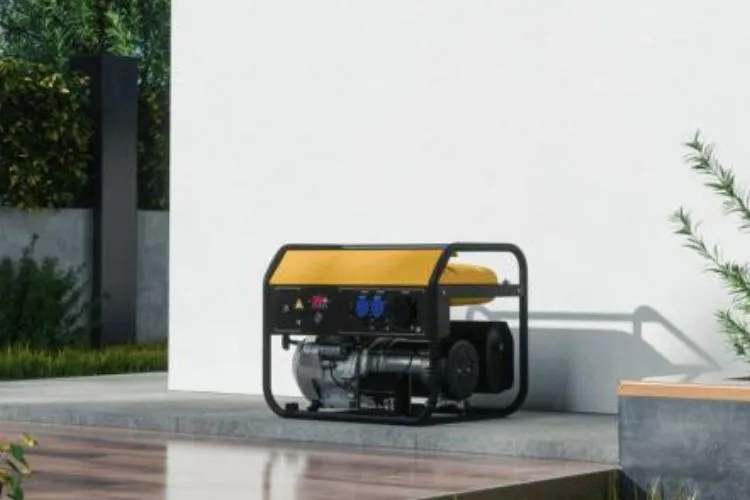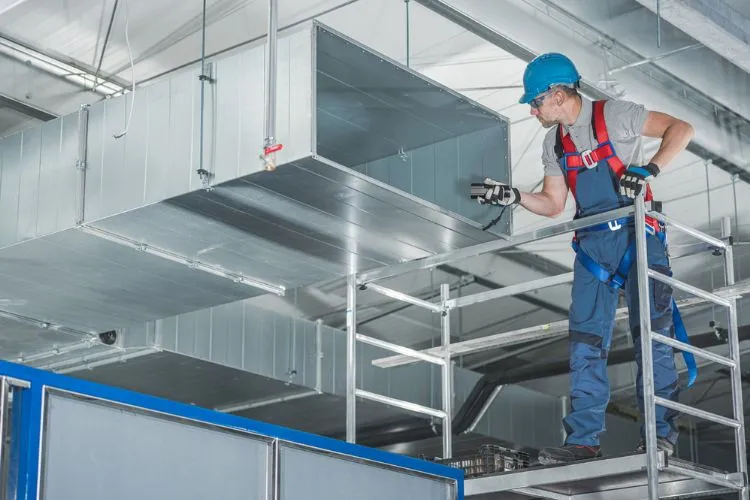“Are you wondering, ‘Can you use portable generator indoors?’ Many homeowners find themselves asking this question, especially in weather-related emergencies.
Understanding generator safety is critical to protect your home and loved ones. In this article, we will dive into the specifics of indoor generator use, exposing potential hazards and providing comprehensive guidelines for safe and effective operation.
Learn to manage your power needs wisely with our deep-dive into this important topic.”

Can you use portable generator indoors?
Powering up your portable generator inside your home might seem like the immediate remedy to your predicament. However, the implications of such a decision might be more serious than you think.
Portable generators, like all devices that burn organic fuel, emit a toxic byproduct in the form of Carbon Monoxide (CO). Invisible, scentless, and lethal in concentrated doses, CO typically dissipates harmlessly in the great outdoors.
However, when confined within walls, it builds up rapidly – a silent, invisible threat to the safety of your home and loved ones.
Understanding Carbon Monoxide and Its Effects
CO is a malicious specter of a gas. As a byproduct of combustion, it’s found anywhere there’s burning – from car exhausts to cigarette smoke. However, when humans inhale it in high concentrations, it replaces the oxygen in our bloodstream, starving our vital organs of the life-giving element.
Initial symptoms mimic those of the flu- headache, dizziness, nausea, shortness of breath, and fatigue. With prolonged exposure or higher concentration, the symptoms can escalate to confusion, vomiting, loss of consciousness, and eventually, death.
If you or your loved ones exhibit these symptoms during a power outage while a generator is running, evacuate immediately and seek medical attention.
Safety Precautions When Using Portable Generators
Given the inherent risks of running a generator indoors, it’s crucial to understand proper generator placement and operation. First and foremost, always place your generator outside, at least 20 feet away from your house, to ensure the CO gas dissipates safely.

While an open window or garage door might seem like it would provide sufficient ventilation, I cannot emphasize this enough – it does not. Studies have shown that even with the garage door open, CO levels can still build up inside.
Installing a battery-operated CO detector in your home is another essential step towards ensuring safety. These devices sound an alarm when CO levels in your home reach dangerous levels, providing an immediate warning of the unseen danger.
Alternative Power Solutions for Indoor Use
Does that mean using generators during power outages is inherently dangerous? Not necessarily. If your only source of backup power is a fuel-burning generator, consider investing in battery-powered or solar generators. These generators don’t emit CO and can be safely used indoors.
Uninterruptible Power Supply (UPS) systems ensure seamless power transition for crucial devices like computers, medical equipment, and refrigeration. Investigate your power needs and explore safe alternatives to ensure your readiness for the next power outage.
Real-Life Incidents: Lessons Learned
Real-life incidents paint a chilling picture of the lethal possibilities of indoor generator use. For instance, following Hurricane Irma in 2017, over 50 people in Florida were treated for CO poisoning, all linked with the improper use of generators indoors.
By recounting such incidents, the hope is not to induce fear, but to emphasize the importance of safety during the stressful time of a power outage.
Ventilation Solutions for Temporary Generator Use
While the golden rule is to never use a portable generator inside your home or in partially enclosed spaces, emergencies might require you to operate a generator closer to your living space than you would prefer.

In such cases, it’s crucial to take extraordinary measures to mitigate risks, particularly concerning ventilation. Below are some temporary solutions that can be implemented with safety as the principal focus.
DIY Exhaust Extension Systems
An exhaust extension system can redirect the fumes away from the generator and out into the open, reducing the risk of CO build-up around your home. This is essentially a series of pipes or hoses attached securely to the generator’s exhaust, leading the emissions away.
It’s imperative that any DIY solution should be checked by a professional to ensure it does not pose an additional risk, complies with local regulations, and doesn’t void the warranty of your generator.
Rental Options for Ventilation Fans and Equipment
For those needing to run a generator near their home, properly rated ventilation fans can be a lifeline. Specialty rental companies provide industrial fans and blowers that can help disperse toxic fumes more effectively than typical household fans.
These fans are designed to create significant airflow even in outdoor or semi-outdoor settings, pushing generator exhaust away from inhabited areas and toward open spaces where it can dilute safely.
Considerations for Creating Cross-Ventilation
In structures where generators must be used close to a building due to space constraints, cross-ventilation can help reduce the buildup of dangerous fumes. This involves allowing air to flow freely between multiple openings, ideally on opposite sides of the space.
A combination of strategic fan placement and open pathways for air — such as doors or windows on opposite sides of a space — can enhance this effect. However, this method is not a substitute for keeping a generator outdoors; it’s a supplementary measure for reducing risk in tight situations.
It bears repeating that these measures are temporary and should not replace the recommended practice of operating generators at a safe distance outdoors.
The best solution, where possible, is to plan for emergencies with an appropriate setup that prioritizes health and safety above all else. Always consult with experts before implementing any temporary measures to ensure maximum safety and compliance with local safety codes.
Frequently Asked Questions (fAQs)
Can I use a portable generator in my garage if the door is open?
Although an open garage door might seem to provide sufficient airflow, it is not enough to disperse CO gas effectively.
How far does a generator need to be from the house?
As a rule of thumb, a generator should be at least 20 feet away from your house, facing away from doors or windows.
How can I safely provide power to essential devices indoors during an outage?
Consider battery-powered or solar generators, and UPS systems for critical devices. Always consult a professional when trying to determine the best, safest solution for your needs.
Conclusion:
Remember, during a power outage, your safety is paramount. Using a portable generator indoors without adequate precautionary measures could endanger your life and those of your loved ones. Always take the safe approach and when in doubt, consult a professional.
